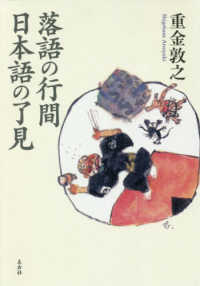Full Description
With the development in the 13th century of co-operative tactics using crossbowmen and heavy spearmen, the charge by Muslim horse-archers, and then by European armoured knights, could be defied.
Infantry were far cheaper and easier to train than knights, and potentially there were far more of them. Tactics emerged by which more numerous and more varied infantry played an increasing part in battles.
This book traces these and other examples of this 'jerky' and uneven process through its regional differences, which were invariably entwined with parallel cavalry developments - the balanced army of 'mixed arms' was always the key to success. By the time serious hand-held firearms appeared on battlefields in large numbers in about 1500, the face of medieval warfare had been transformed.
This lavishly illustrated guide investigates the reappearance of massed, disciplined infantry, and assesses the challenge they posed to the mounted knights who had dominated the battlefield in the early Middle Ages.
Contents
Introduction
Background - the experience gained from defeats at the hands of the 13th-century Mongol invasions, and of Muslim armies in the Middle East
Development of infantry weapons and tactics as result of meeting these basically light cavalry enemies. (e.g. Tagliacozzo, 1268; Falkirk, 1298; Courtrai, 1302)
The decline of lance and the rise of close-quarter cavalry weapons - confusion of tactics (e.g. Najera, 1367; Aljubarotte, 1385; Castagnaro, 1387)
Crossbow and longbow - reasons for divergence between mainland European and English armies - how each type worked alongside cavalry and dismounted men-at-arms (e.g. Crecy, 1346; Agincourt, 1415)
'Blip' in rise of infantry dominance as heavier cavalry armour becomes arrow-proof (e.g. San Romano, 1432)
Decline of archery in favour of combined-arms infantry armies - bows subsidiary to massed pikes and halberds (e.g. Grandson, 1476)
Increasing importance of field artillery (e.g. Castillon, 1453) and hand-held firearms (e.g. Cerignola, 1503)
Plate commentary
Bibliography
Index








